Yellow apples are a big part of the fall harvest and enjoy widespread popularity with apple trees all over the world. They are a favorite among many foodies and whether you are hosting parties or a family dinner, there is no better way than having yellow apples on your table.
They can be used in a variety of ways, from pies and tarts to salads and sauces. In other words, yellow apples are a must-have for your fall fruit basket.
Just like most people, I too have tried some yellow apples over the years and there is surely something about these apples. Yellow apples are not only delicious to eat, but they also look attractive.
Yellow apples are found in many sizes, shapes, taste and flavor. They can be small and soft or they can be huge and crunchy. They can also be as sweet as candy or tart as lemonade.
For anyone looking for a tasty and healthy snack, yellow apples are great in this regard. You can use them to balance your diet and improve your overall health.
While many people are familiar with the classic yellow apple such as the Golden Delicious, there are actually many different types of yellow apples you might come across and it is important that you know what each type is.
This article will talk at length about yellow apples including their history, characteristics, uses and availability.
List of Yellow Apples
Old Yellow Apple Varieties
- Jonagold
- Crispin
- Golden Delicious
- Newtown Pippin
- Rhode Island Greening
- Adams Pearmain
- Akane
- Gravenstein
New Yellow Apple Varieties
- Blondee
- Criterion
- Ginger gold
- Golden Supreme
- Silken
- Antonovka
- Alderman apple
- Ambrosia Apples
Description
Jonagold Apple

Jonagold cultivar was developed in New York State in 1953 and is a crossbreed between the crisp golden delicious and the bluish-crimson Jonathan apples.
It was developed by the Agriculture Experimental Station of Cornell University, College of Agriculture and Life Sciences. It was selected as an improved variety of its parent apples (crisp golden and the bluish-crimson).
Jonagold apples are large in size with a thin skin. They are green-yellow in color with some crimson brindled covering color. The fruit is juicy and aromatic with a crunchy consistency. The plant has sterile pollen and as such requires a second type of apple for pollen and is incapable of pollinating other cultivars.
Jonagold apples are available from early fall to early winter and can be used in cooking and baking due to their sweet flavor and firm texture.
They can be eaten fresh, used in salads or cooked down into sauces and pies. It can also be used as a fresh topping over tacos, pancakes and waffles.
Also Read: Different Types of Green Apples
Crispin Apple

Crispin apples also referred to as Mutsu apples are a hybrid variety that was developed in Japan in the 1930s by crossing Golden Delicious apples and Indo apples. Crispin apples are larger and more round than other apple varieties.
Their skin is thin, easy-to-peel, yellowish-green in color housing an orange juicy and textured flesh. These apples too have a refreshing and balanced sweet-tart flavor with fruity undertones reminiscent of pears.
Crispin apples trees produce fruits from late autumn to early winter, although one problem with these trees is that they may only produce fruit biennially. Another thing about these trees is that they do not pollinate other apple trees, but can be pollinated by any other varieties nearby.
They are a versatile apple because they can typically be consumed straight, out of hand or they can be chopped and tossed into fruit salads or integrated into fresh spring rolls.
These apples can also be stored for several months without going bad. They are a good source of vitamin C and dietary fiber and they contain antioxidants that can help protect against the harmful effects of free radicals.
Golden Delicious Apple

Originally from a family farm in the hamlet of Odessa in Clay County, West Virginia, Golden Delicious has been cultivated around the world since 1800s and is one of the 15 most popular apple cultivars in the United States, due to its high yield and sweet flavor.
These apples are small to medium in size with a round to conical appearance, and broad shoulders tapering to a wide base.
This variety has reigned as one of the top commercial cultivars for many years and its genes have been used in many breeding researches. Golden Delicious apples are a parent to Jonagold, Gala, Mutsu, Pink Lady and Ambrosia apples.
The skin of golden delicious has golden-yellow to bright yellow hue and often covered in a blush of green or pink-red color. Its flesh is fine-grained, juicy with a tender or soft consistency. The flesh also consists of a small oval depression filled with tiny dark brown seeds.
Golden Delicious are commonly available from early fall throughout winter. The trees can be found in both dwarf and semi-dwarf sizes, fitting easily into any garden setting. These trees are hardy able to tolerate both heat and cold temperatures.
More importantly, the trees are self-pollinating, which imply that they can be grown in any garden space without the need of another Golden Delicious tree being present in the garden. Golden Delicious apples pair well with cranberries, pears, grapes, maples, nutmeg etc.
Also Read: Different Types of Yellow Peppers
Newtown Pippin Apple
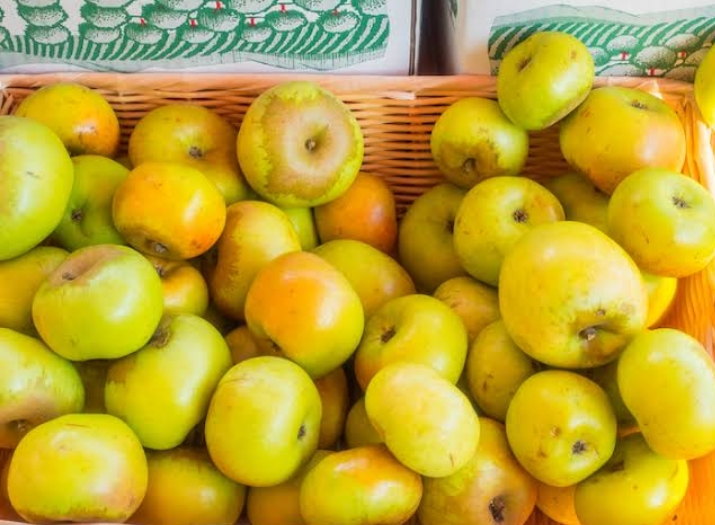
The Newtown Pippin also Albemarle Pippin are a variety of apple that was first grown in the late 18th century in the town of Newtown, Long Island, New York.
They are actually considered a heritage variety and still grown in the Northeastern United States particularly New York and Virginia.
The Newtown Pippin is a small to medium-sized apple, round in shape and has a yellow-green skin and greenish-yellow, crisp flesh. It is often russeted around the stem.
The Newtown Pippin tree is medium size and is even great for backyard orchards. It produces fruits in late summer and early fall. The trees grow best in warmer climates and are particularly well-suited for places like Hawaii, Virginia, North Carolina and Georgia.
The Newtown Pippin apple is delicious in nature with a rich, sweet taste with a hint of tartness. It’s one of the best apples for eating out of hand and it is also great for baking because it has a higher sugar content when compared to most apple varieties.
This apple can not only be eaten fresh in summer months but also makes excellent dessert when baked into cakes or tarts. It can be used to make juice, pies and crisps.
Rhode Island Greening Apple
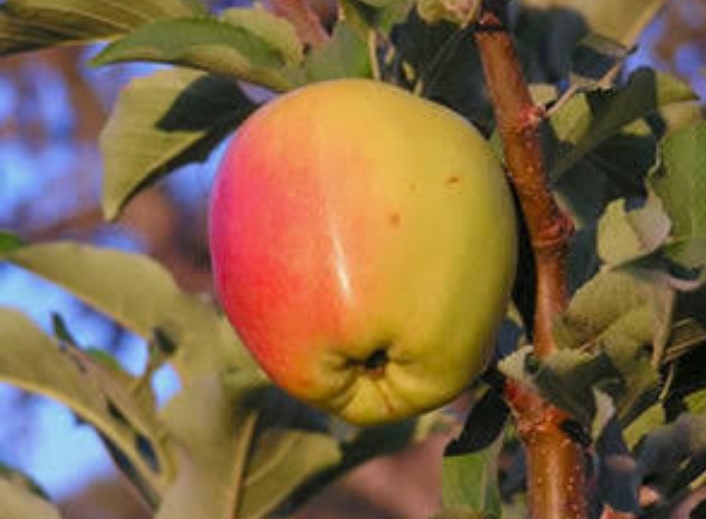
Rhode Island Greening is a heritage variety that has a long history of cultivation in the northeastern United States, particularly in the state of Rhode Island.
The Rhode Island apple is thought to have originated in the late 1600s and was once a popular variety for both fresh eating and cooking.
Despite its long history, the Rhode Island Greening is not as widely cultivated as some other apple varieties and may be harder to find in some parts of United States.
Rhode Island Greening tree can grow quite large up to 30 feet or more and also have a long lifespan and can continue to bear fruits for many years. This is a late-season apple, meaning that it is harvested in the fall.
The fruits of this tree are often round to oblong and of variable size with a bright-greenish-yellow skin. The flesh is creamy and refreshing with notes of pineapple.
The flavor of the fruits is best after they have been stored for at least four weeks, rather than when picked straight from the tree.
The Rhode Island Greening is known for its ability to hold its shape when cooked, making it a good choice for use in pies and other baking.
It also a good choice for use in cider and apple butter. The apple can be chopped and added to fruit salads, layered into sandwiches or pressed into juices and ciders.
Adams Pearmain Apple

Adams Pearmain also referred to as Adam’s Parmane is an ancient variety that was first introduced to the Horticultural Society of London in 1826 by Robert Adams under the name ‘Norfolk Pippin’.
These apples are small to medium in size and somehow conical-shaped with broad upper-side tapering to a narrow base.
The flesh of the fruits is ivory to pale yellow in color with crisp consistency. The skin of the fruit has a pale yellow-green hue, flushed with dark red blush. The surface is also covered in patches of russet.
Adams Pearmain apple trees begin producing fruits 3 to 4 years after planting and can continue to produce fruits for up to 50 years. The specific timing of fruit production will depend on the climate and growing condition of the trees.
In general, the Adams Pearmain is an early-season apple, in that it is ready for harvest in late August or early September. The apples are rare variety difficult to find outside of selected growers in England.
Unwashed Adams Pearmain apples will keep for several weeks when stored in a cool, dry or dark place. In a proper cold storage, the apples will keep up to four months.
The apple is good for eating fresh, as well as for cooking and baking. The crisp flesh can be sliced and eaten with nut butter, spreads and dips or served with fruits and cheeses.
Also Read: Different Types of Avocados in North America
Akane Apple
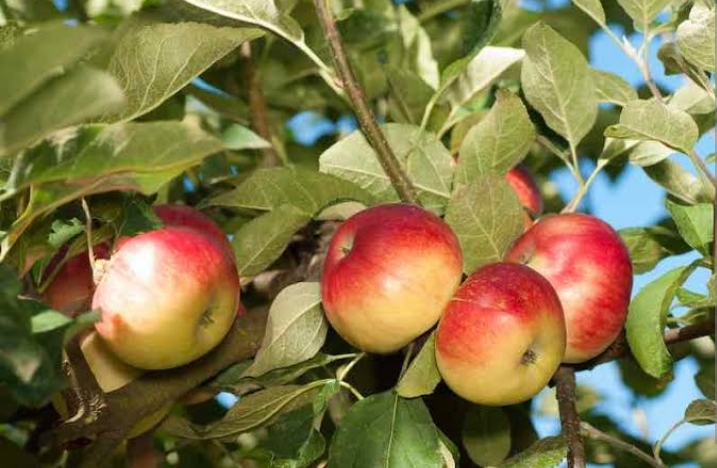
Akane also referred ‘Tokyo Rose’ was develop by the Morika Experimental Station of Japan in the early 1900s by crossing a Jonathan apple with a Worcester Pearmain.
This is a popular apple in Japan where it is grown extensively, though it also grown in other parts of the world including the United States. It is known for its high levels of antioxidants and is considered to be a healthy choice for snacks and meals.
The Akane apple is hardy with ability to thrive in a variety of climates. It can grow to be quite large, reaching heights of up to 30 feet and has a wide spreading canopy.
The tree produces white flowers in the spring which give way to the yellow-green apples in the fall. The Akane apple tree is self-sterile and need to be crossed-pollinated. It is resistant to many common diseases and pests.
The shape of the fruits ranges from flattened to heart-shaped. It has a green-yellow skin covered with a bright red color, often with lenticels. The flesh is firm, creamy, sweet flavored and refreshing with notes of strawberry or raspberry.
Akane apples store very well at cold temperatures and can be eaten three or four months into storage. They can make a good substitute for another well-known Japanese variety known as Matsu.
Gravenstein Apple
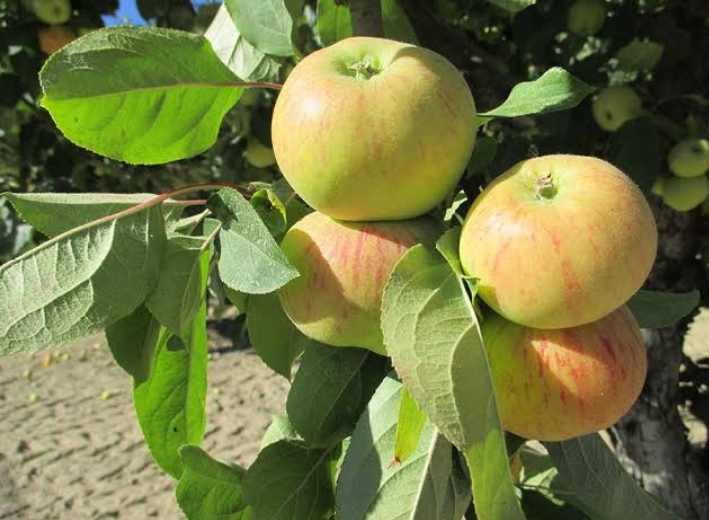
Gravenstein is an old apple variety that originated in Denmark and has been around since 17th century. This apple variety grows in a wide variety of climate from Japan, Europe to United States.
The Gravenstein apple fruit has a delicately waxy yellow-green skin with crimson spots and reddish blush or lines.
The flesh is juicy, finely grained, creamy-colored with a sweet-tart flavor. The flesh also encases a small central depression with tiny black-brown oval seeds. The apples are usually round with flattened bottoms.
Gravenstein plant is a triploid in nature, in that it requires to grow nearby other apple varieties for pollination and is in itself a poor pollinator of other apples. The trees of this cultivar are the largest of standard apples with a strong branching structure.
The apples on this tree are ready for harvest in the mid to late summer. The apples will keep up to 6 weeks when stored in a cool and dry place. The apples can be eaten fresh, consumed as dessert or used for baking and cooking.
Blondee Apple
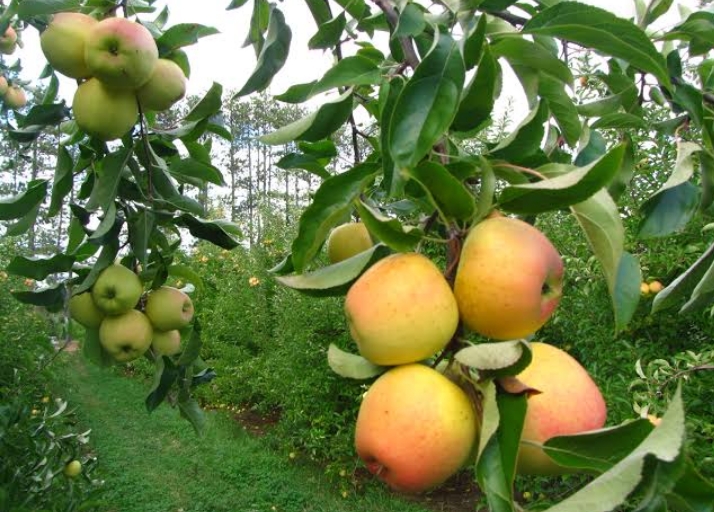
Blondee is a new apple variety discovered by Tom and Bob McLaughlin of Port in Portsmouth, Ohio in the year 2000. The apple is spontaneous mutation of the gala apples and was introduced into commercial markets in 2012.
Today Blondee apples are grown by selected nurseries and sold by many grocers, farm stands and orchards in North America.
The Blondee is actually good for those who want to enjoy something with a little more flavor than their standard apple. The skin is yellow, smooth with patches of textured russet surrounding the stem and is speckled with a few tan lenticels.
The flesh is golden yellow and has a sweet mild taste that’s great for snacking on while you’re relaxing at home as you watch the sun go down. It can also make pies, baked goods and even smoothies.
Criterion Apple
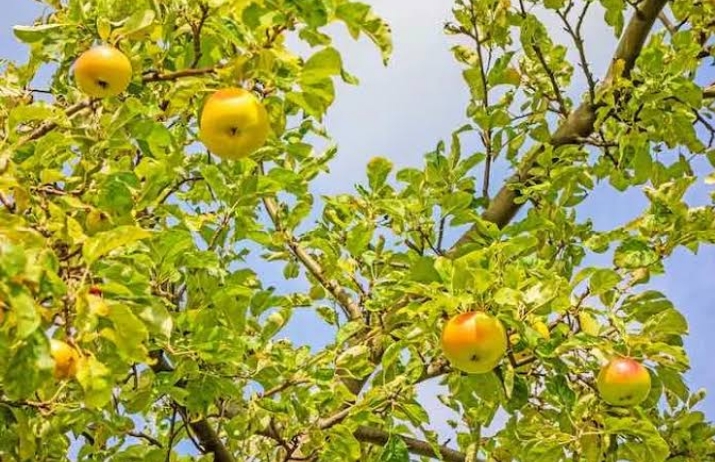
Criterion apple was discovered as a random plant in an Orchard near Parker Washington in the late 1960s. The apple fruit is large in size with a yellow skin having a pink blush over it, which covers a varying portion of the fruit.
In general, Criterion apples have a firm, crisp white flesh with a sweet, slightly tart flavor. They can be used in pies, tarts and other baked foods or simply baked on their own with a sprinkle of cinnamon. They can also make cider, apple juice and other beverages.
Criterion apple trees are medium to large in size reaching a height of 15 to 20 feet when fully grown. The have a rounded canopy and a sturdy trunk. The trees bear fruits usually from late September to early October. Although this can vary based on the specific location and climate where they are grown.
In some areas, Criterion apples may be available earlier in the fall, while other areas may be available later. The trees are self-fertile which means they do not need a pollinator in order to produce a fruit. In other words, they are able to produce fruits without the need for another apple tree of different variety to be present. The tree bears fruit vigorously but biennially.
Ginger gold Apple

Ginger gold was discovered in the 1960s as a chance seedling growing in Clyde and Frances Harvey’s orchard in Nelson County. Ginger gold apples are believed to have emerged from a natural cross-pollination of a Golden Delicious apple with Albermarle.
The fruit of Ginger gold is medium in size and conical in shape, with a thin skin that ripens from green to pale yellow. If the apples are left for quite a long period without being harvested, they develop a waxy coating and occasional light red blush.
Ginger gold apple trees have a moderate to fast growth rate and can reach a mature height of 15 to 25 feet. Though in many places such as New England you will find these apple trees to have been shaped, growing as semi-dwarf trees of between 4 to 10 feet in height.
Ginger Gold apple trees are self-fertile and therefore do not require another variety of apple tree to pollinate them in order to produce fruit. However, having another apple tree nearby increases the yield of Ginger Gold apples. The trees are hardy in USDA hardiness zones 5 through 9, which means they can withstand winter temperatures.
Ginger Gold apples are harvested in late summer and are available in the markets from August to November. They can be eaten fresh or used in salads. The flavor is mild but with a tart finish. They are many times used in baking and cooking because of their sweet flavor and ability to hold their shape when baked.
Ginger gold apples are a good source of fiber and contain a variety of nutrients including vitamin C, potassium and antioxidants.
Golden Supreme Apple
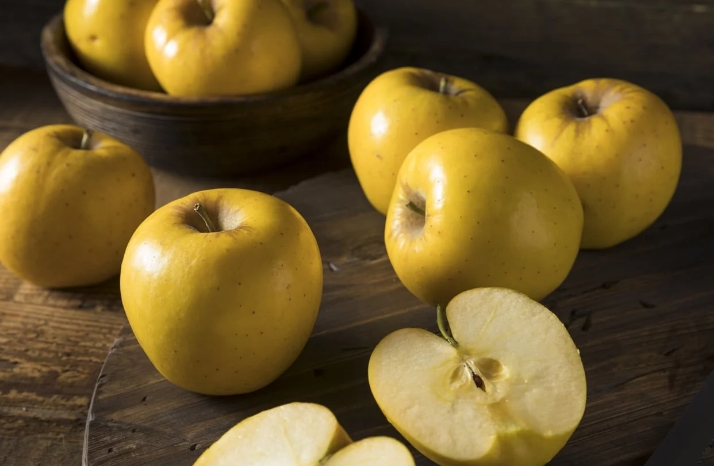
Golden supreme is a variety that has been around since 1960s. For years, there has been unsettled debate among apple lovers as to whether this variety was first grown in Idaho or Clay County, West Virginia.
Irrespective of the debate, one thing that has never been contested about this variety is that it emerged as a chance seedling in an orchard and was never cross-bred.
Golden supreme apples are currently grown in a number of regions worldwide including United States, Europe, Africa and Asia.
The fruits have an attractive golden yellow skin color. They are large in size and have a round, oval shape with sweet, juicy flavored, crisp textured flesh.
These apples lack acidity and their flesh does not turn brown very quickly after cutting. You can use the apples for both fresh eating and cooking. You can too use them for baking and cider.
The Golden Supreme apple tree is medium-size in nature growing between 20 to 25 feet in height with a moderate to strong central leader and a rounded crown.
The apples fruits are harvest in late September to early October, depending on the location and climate. A fully ripe Golden supreme apple fruit will have a deep-gold color and it should feel firm to the touch but not hard.
Also Read: Different Types of Dwarf Lemons
Silken Apple
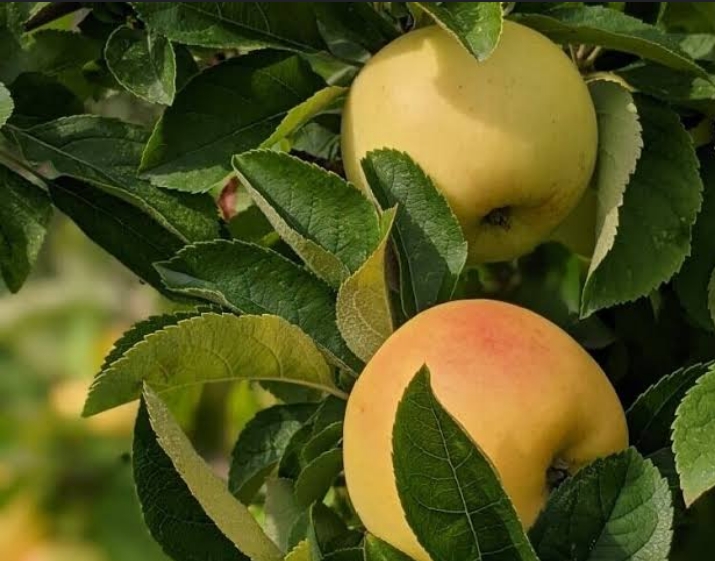
Silken apple is a cross between honeygold and sunrise apples developed in 1982 at the Pacific Agri-Food Research Center in Summerland, British Columbia. The fruit is round in shape and has a yellow-green skin splashed with a pink blush at the top.
The white flesh is firm, crisp and sweet-tart with moderate acidity and notes of honey. The apples are available at very many pick-your-own orchards and farmer’s markets throughout North America, Europe and Asia. They are mostly available for a short season in the early fall.
Silken apple was bred to have a higher sugar content than regular apples. It gives a sweeter taste and a softer texture. The apples can be used in many cooking applications and can be blended applesauce, pressed into juices and ciders or sliced and served as appetizers alongside cheeses and dips.
The fresh apples will keep for at least 2months when stored whole and unwashed in the crisper drawer or the refrigerator.
Antonovka Apple

Antonovka is a Russian variety developed by pioneer Russian naturalist and plant breeder Ivan V. Michurin at his experimental orchard in the Tambov Oblast and introduced in 1988.
Antonovka fruit is greenish-yellow and has a relatively thick skin with russet overtones. The flesh is pure white and aromatic, with a high acid content that sweetens when fully ripe. Anyone who has tasted this fruit has always praised it for its incomparable strong, pleasant fruity aroma.
The Antonovka tree is hardy with ability to tolerate long harsh winters. This fruit tree is often used in Europe and United States as a rootstock to add cold hardiness to other apple types that can be grafted. The tree also has a long taproot making it sturdy and drought tolerant.
The Antonovka apples are ready for harvest from early summer until fall. They are ready to harvest once they have turned almost pure yellow in color or soft when squeezed. Allow the fruit to fully ripen before harvesting to avoid tartness.
Antonovka are best for eating fresh out of hand, though they can also be used for baking and cider.
Ambrosia Apple
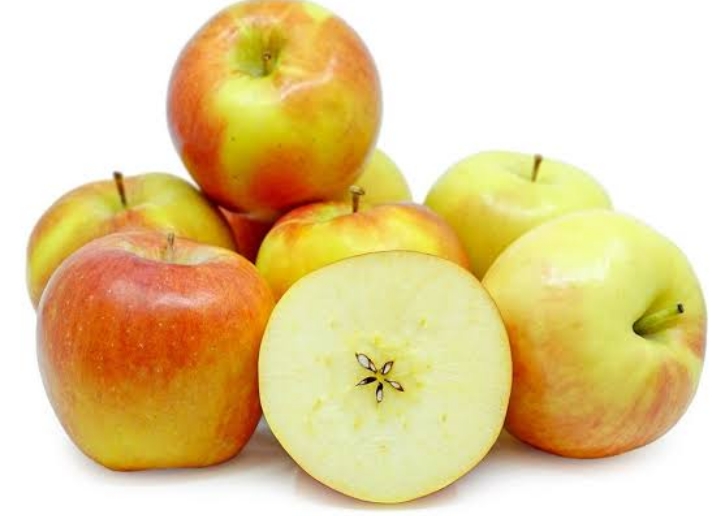
Ambrosia apples were discovered growing as a chance seedling in the orchard of Wilfrid and Sally Mennell in Cawston in the Similkameen Valley of British Columbia in 1988.
The apple fruit of this cultivar can be described as medium to large and has mostly red, glossy coloration with yellow patches.
The flesh is firm, cream-colored with a sweet fruity scent and are naturally low in acid, contributing to the apple’s notes of pears and wildflower honey. The flesh also encases a small central depression with tiny black-brown oval seeds.
Ambrosia apple trees are medium in size and can grow quickly to mature heights of up to 30 feet. The fruits are harvested in the fall and have one of the shortest harvest seasons of North American apple cultivars.
These apples can be used in any recipe that calls for a pie or source or just eaten as fresh fruit by themselves. They’re great for cooking but also make for delicious homemade cider or juice.
Also Read: Different Types of Plums